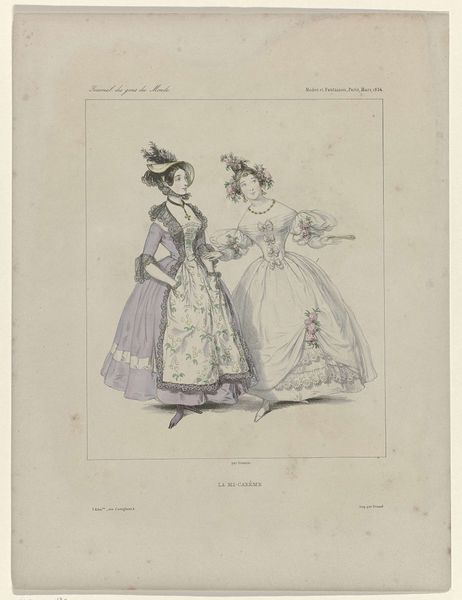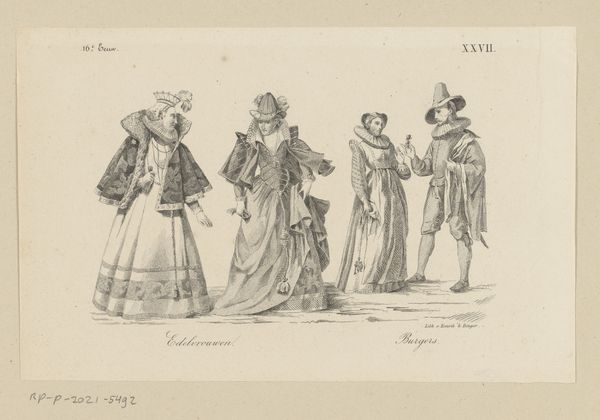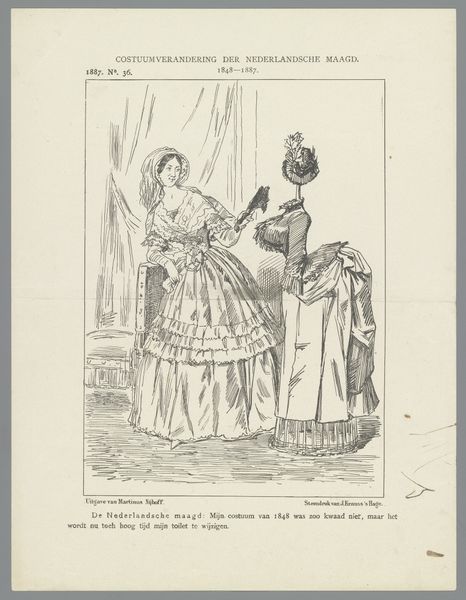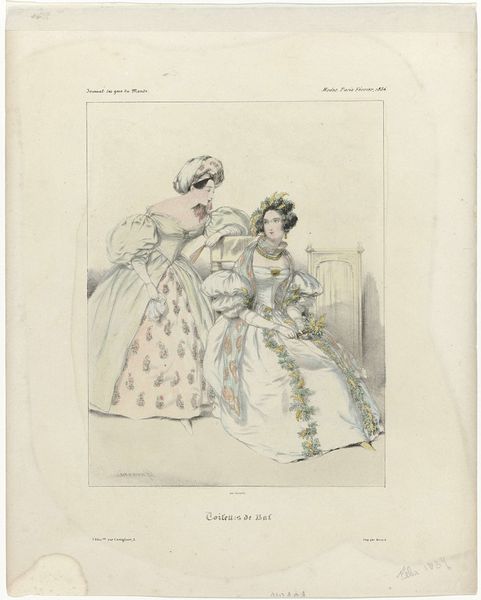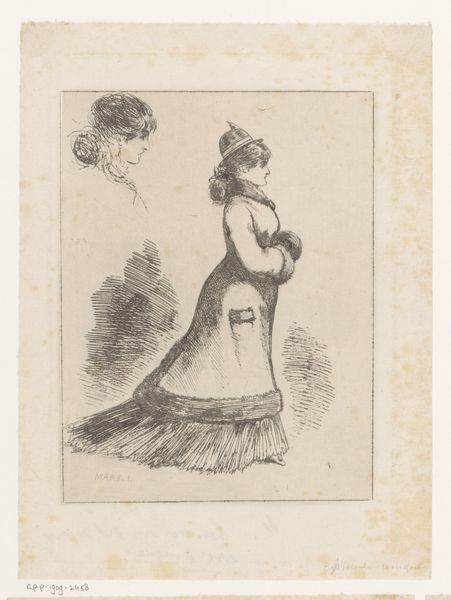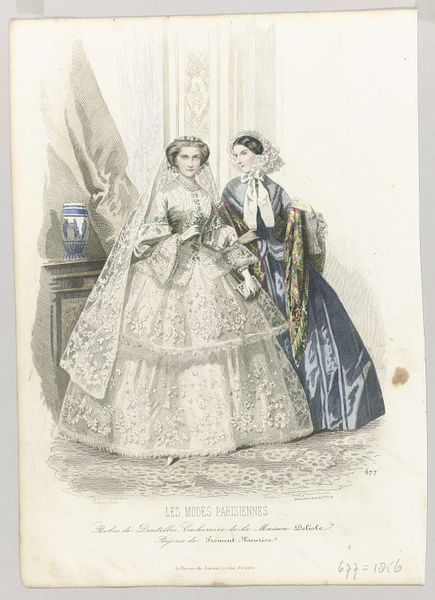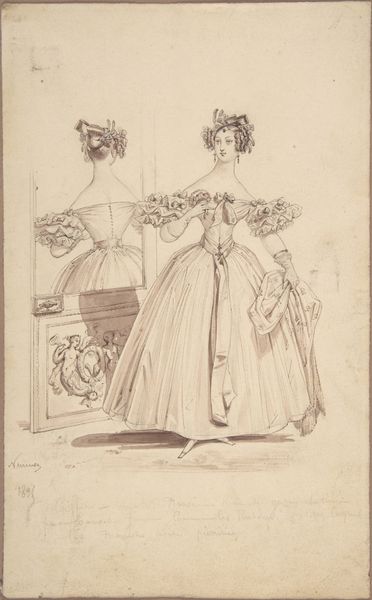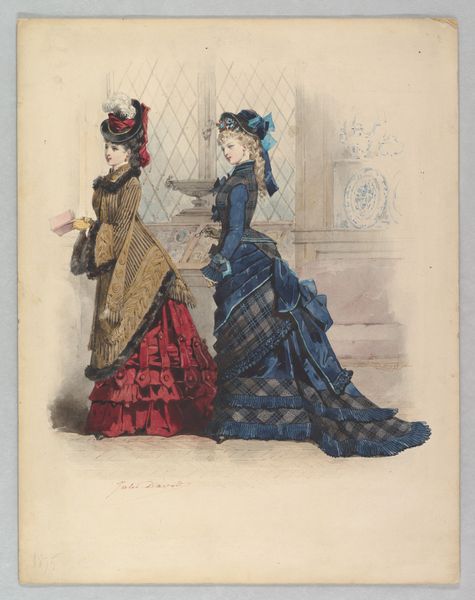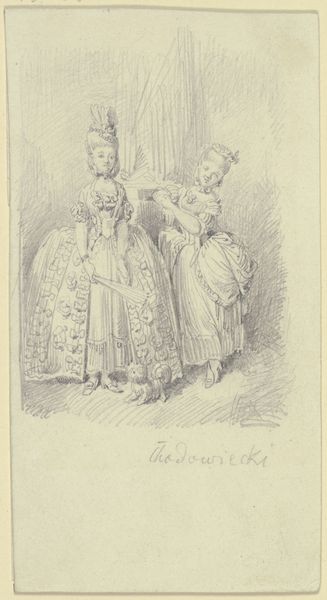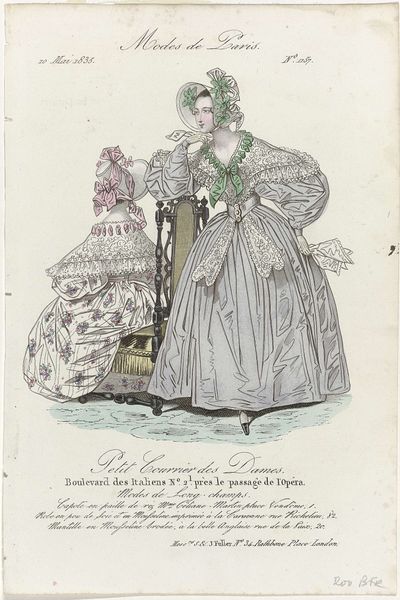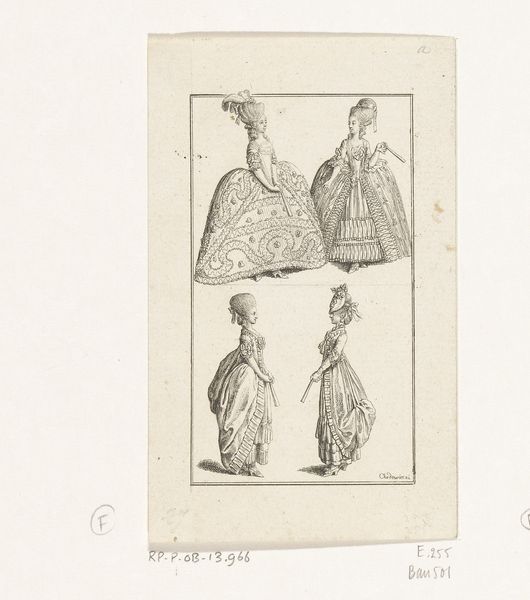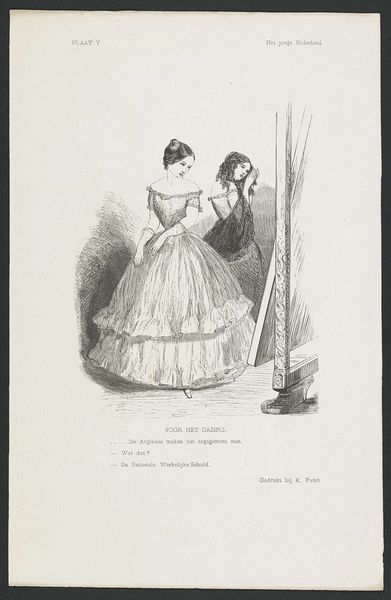
Spotprent op de gelijktijdige zittingen van de Eerste en Tweede Kamer, 1869 1869
0:00
0:00
drawing, pen
#
portrait
#
drawing
#
caricature
#
pen
#
history-painting
Dimensions: height 215 mm, width 275 mm
Copyright: Rijks Museum: Open Domain
Editor: Here we have Johan Michael Schmidt Crans's 1869 pen drawing, "Spotprent op de gelijktijdige zittingen van de Eerste en Tweede Kamer," or "Cartoon on the simultaneous sessions of the Upper and Lower Houses." The work depicts two women in large dresses; on the dress of one woman, it is written "Lower House," while on the other dress, "Upper House." They are facing one another. What’s striking to me is how directly political it is. How was this kind of imagery received in its time? Curator: Well, such caricatures played a crucial role in shaping public opinion and critiquing the political landscape. Consider the context: 1869 was a period of significant political debate in the Netherlands. These ‘houses’ – visualised as fashionable women, rather than the typical male politicians – offers a deliberately feminized portrayal. The drawing implicates how both the chambers discussed the colonial politics of the time, and perhaps a specific matter around that? Editor: It seems rather bold to represent governmental bodies with, well, women concerned with their social presentation… Is there a commentary on power dynamics at play here? Curator: Precisely. Crans likely targeted the perceived frivolousness or perhaps even the ineffectiveness of parliamentary debates by representing the chambers in female form focused on fashion of dress. It raises interesting questions about how societal expectations of gender influenced perceptions of political authority. Notice, however, that even in their fanciness the Lower House directly addresses the viewer, whereas the Upper House maintains a guarded presentation by covering with her fan. Editor: So, beyond the immediate political jab, the artist uses gender as a lens to critique the political system itself? Curator: Yes. Crans invites us to consider the social constructs influencing power. The act of visualizing institutions in such a way underscores the public role of art. The way these ideas are received shaped—and were shaped by—the public, their discussions and access. Editor: This has really changed my perception! It is more than just a caricature; it's a window into the political and social attitudes of the time. Curator: Indeed. And it exemplifies how art engages in public dialogue, even – or especially – through satire.
Comments
No comments
Be the first to comment and join the conversation on the ultimate creative platform.
